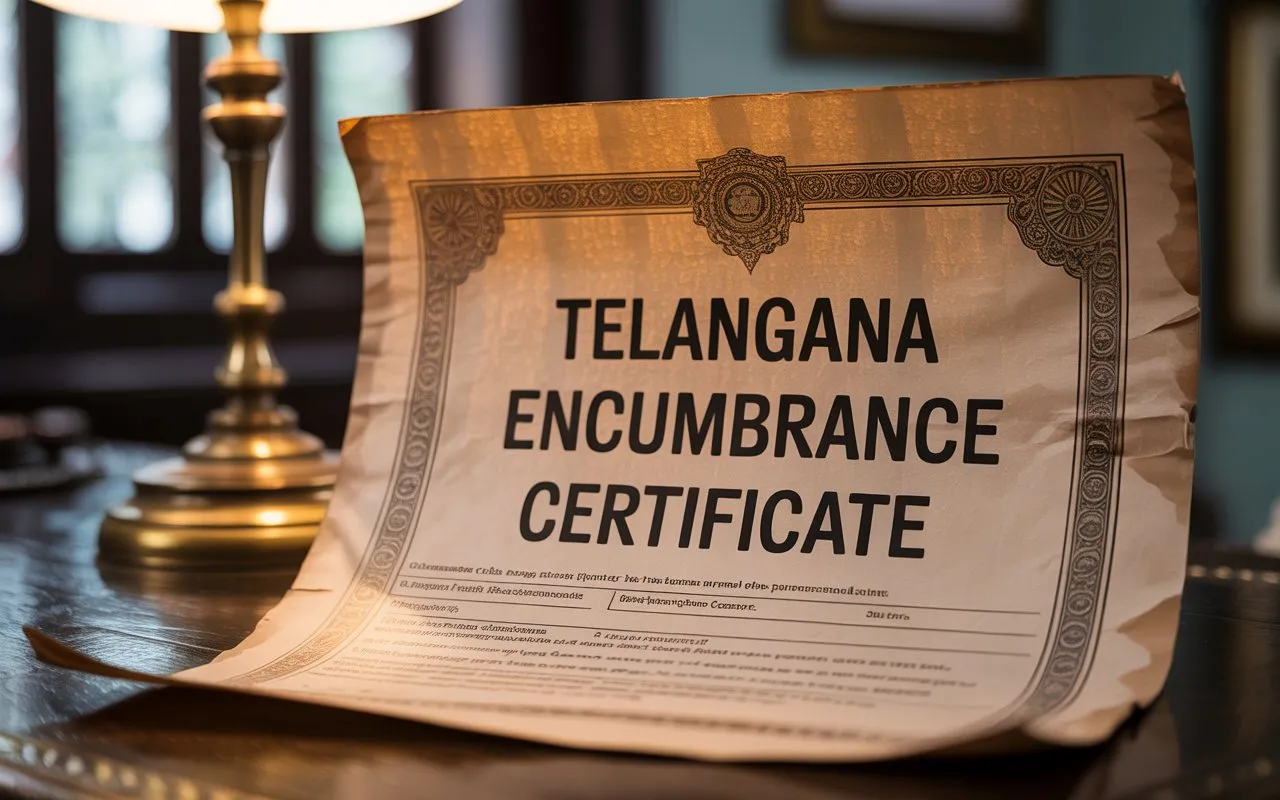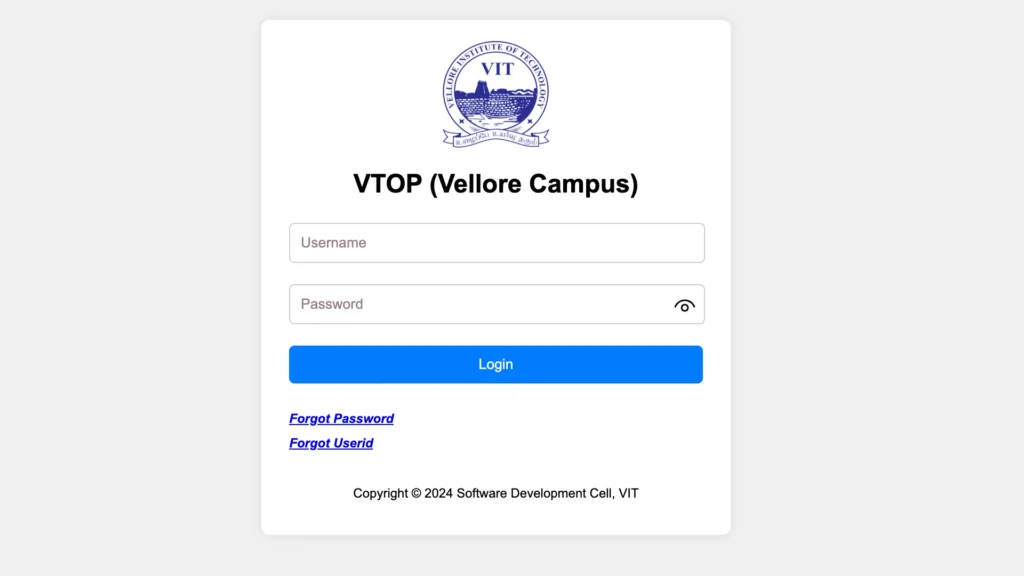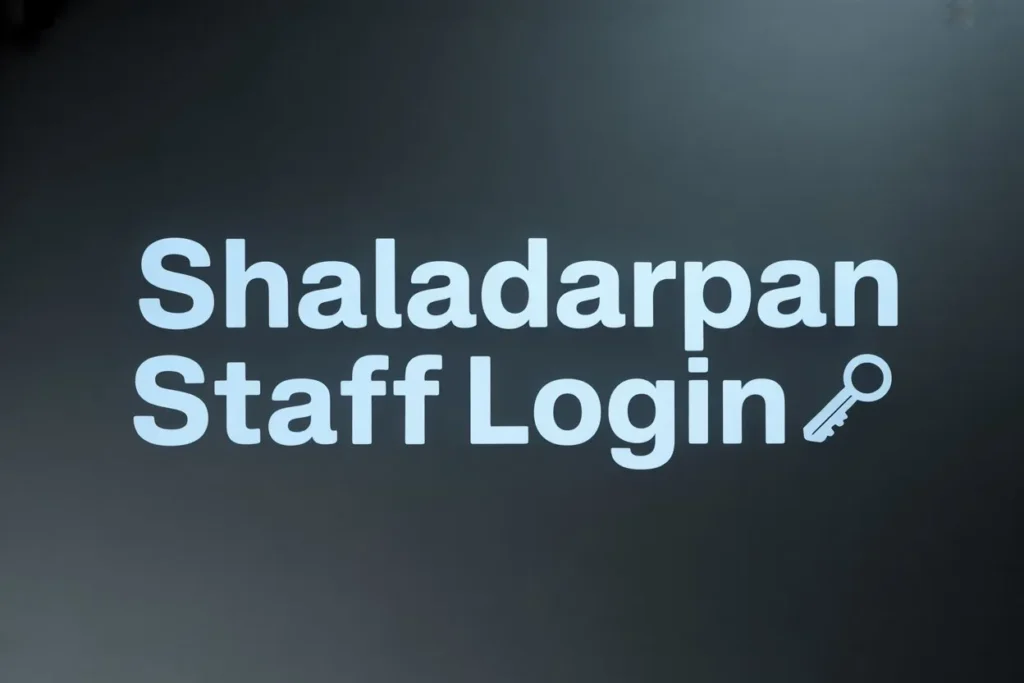An Encumbrance Certificate in Telangana is an official record that indicates whether a property has any registered liabilities, such as mortgages, loans, court attachments, or leases, during a specific period, thereby ensuring the title is clear and marketable. This in-depth guide explains the meaning of EC, why it matters, the difference between Form 15 and Form 16, where to get it, detailed online and offline procedures, fees and timelines, how to read and verify an EC, special cases, common mistakes, and FAQs for confident, compliant property transactions.
Introduction
Buying or selling property without checking the Encumbrance Certificate is like sailing without a compass—one may move forward but risks hidden dangers beneath the surface. EC provides a time-bound snapshot of all registered transactions that affect a property, allowing stakeholders to assess title clarity and potential risks. In Telangana, ECs can be viewed online and obtained as certified copies through the Registration & Stamps infrastructure and MeeSeva, making due diligence faster and more transparent.
What is an Encumbrance Certificate?
An Encumbrance Certificate is an official statement of registered transactions that impact a property within a chosen time frame. “Encumbrance” includes anything that legally burdens the title: mortgages, liens, court orders, attachments, leases, and transfers. When there are entries within the period, the EC lists them; when there are none, it issues a Nil certificate. An EC does not cover unregistered transactions or matters outside the searched period, which is why it complements—rather than replaces—broader legal due diligence.
Also Read – When Cricket 07 Became a Game Changer in Cricket Gaming
Why EC matters in Telangana
- Title transparency: EC helps confirm whether the seller has a clean, transferable title free from recorded liabilities for the specified period.
- Lending requirement: Banks and housing finance companies usually mandate an EC before sanctioning home loans or loans against property, ensuring the collateral isn’t already pledged.
- Transaction readiness: EC is relevant for registration, mutation, and taxation updates by demonstrating continuity or change of ownership and the absence/presence of impediments.
- Fraud prevention: EC reduces the risk of double sales and undisclosed mortgages, enabling buyers and lenders to detect red flags early.
Where to get EC in Telangana
Telangana provides an online encumbrance search facility where citizens can search by document number or property details and download a digitally signed EC where available. Certified copies can be obtained at the Sub-Registrar Office (SRO) with jurisdiction over the property or through MeeSeva centers, which assist with applications, payments, and tracking. Agricultural and urban properties may have differing identifiers (survey vs. door/flat numbers), but EC records are tied to registration data maintained by SROs.
Types and forms: Form 15 vs Form 16
- Form 15: Issued when encumbrances or registered transactions exist within the selected period. It lists the nature of entries (sale, mortgage, lease, gift, attachment), parties, document number, year, and SRO.
- Form 16 (Nil EC): Issued when there are no registered transactions or liabilities in the chosen timeframe. This indicates the property had no registered encumbrances during that period but is not a guarantee of absolute title.
Practical example:
- If a property had a bank mortgage registered in 2016 and a registered release in 2022, an EC covering 2015–2025 would show both entries on Form 15. If an EC is requested only for 2023–2025 and nothing else happened, it would likely be a Nil EC (Form 16).
Information included in an EC
An EC typically includes:
- Property identifiers: Survey number/door or flat number, boundaries, and extent.
- Parties and nature of transactions: Vendor and purchaser names for sales, mortgagor and mortgagee for mortgages, lessee/lessor for leases, and details of court orders or attachments.
- Registration particulars: Document number, year of registration, SRO office, and page count.
- Authenticity markers: Official seal and signature for physical copies, and a digital signature or secure seal for downloaded PDFs.
Documents and eligibility
- Who can apply: Any interested party—buyer, seller, lender, tenant, or legal representative—can seek an EC for due diligence.
- Inputs required: Property details (district/mandal/village or ward), survey/door/flat numbers, SRO jurisdiction, time period to be searched, and, if known, registration/document numbers. Identity proof may be needed for certified copies.
- Accuracy tips: Confirm jurisdictional SRO, ensure correct spelling of locality and survey/door/flat numbers, and use known document numbers for precision when available.
How to get EC online in Telangana
A step-by-step approach to an online EC search:
- Account access: Visit the state’s EC search portal and log in or register as a citizen user if required.
- Choose mode: Select “By Document Number” for specific deed-based searches or “By Property” to search via property identifiers and locality/SRO data.
- Enter details and period: Provide SRO or locality parameters, property identifiers or document number, and choose a period that covers the entire chain-of-title whenever possible (often 25–30 years).
- Review and submit: Acknowledge disclaimers and submit the request to view entries.
- Download: Where enabled, download the digitally signed EC PDF and verify the signature properties for authenticity.
Choosing the right mode:
- By Document Number is best when exact registration details are known, ensuring targeted retrieval.
- By Property is helpful when document numbers are unknown, but it requires accurate property identifiers and the correct SRO to avoid incomplete results.
Getting EC offline (SRO/MeeSeva)
If a certified copy is required or online search is inconclusive:
- Identify the SRO: Confirm the Sub-Registrar Office that has jurisdiction over the property’s locality.
- Application form: Obtain and fill the EC application with property details, time period, and known registration references.
- Submit and pay fees: File the application at the SRO or a MeeSeva center, pay applicable fees, and obtain an acknowledgement.
- Processing and collection: After verification, collect the certified EC or receive it through the selected service channel.
MeeSeva centers are particularly helpful for applicants unfamiliar with portal navigation, enabling assisted data entry, correct jurisdiction selection, and status tracking.
Also Read – i Square – Lenovo EX: A New Era in Tech Innovation
Fees, timelines, and validity
- Fees: The payable amount generally depends on the searched period and whether a certified copy is requested; service charges may apply at MeeSeva.
- Timelines: Online viewing for digitized records can be near-instant; certified copies commonly take a few working days, depending on workload and verification steps.
- Validity: ECs are treated as time-sensitive. For critical events like registration or loan disbursal, obtain a fresh EC close to the transaction date to reflect the latest entries.
Reading and verifying the EC
- Interpreting entries: For each entry, check parties, nature of transaction, date, document number, SRO, and, where shown, consideration. Ensure continuity of title across link documents (mother deed to latest sale).
- Detecting red flags: Watch for active mortgages without a corresponding registered release, court attachments or prohibitory orders, inconsistent property identifiers, and unexplained gaps in the chain-of-title.
- Cross-verification: Always reconcile EC information with the latest sale deed, link deed certified copies, mutation or municipal records, tax receipts, building approvals, and utility/katha records. If any inconsistency appears, resolve it with the SRO before proceeding.
Special cases and limitations
- Pre-digitization periods: Older transactions might not appear online. Request manual index checks or certified copies for earlier years at the SRO to fill gaps.
- Unregistered arrangements: Certain private agreements, unregistered POAs, or informal charges do not appear on EC. Independent legal checks and court case searches are essential.
- Complex structures: Joint Development Agreements (JDAs), redevelopment, and layered rights require careful reading of entries and corresponding release/supplementary documents to ensure clean title.
- Agricultural vs urban nuances: Property identifiers differ (survey and sub-division numbers vs door/flat numbers), but the principle remains—accurate identifiers and correct SRO selection drive reliable EC results.
Common mistakes to avoid
- Too short a period: Limiting the search to recent years risks missing older encumbrances that still affect title. Cover at least 25–30 years or the entire chain-of-title.
- Wrong SRO/identifiers: Misidentifying jurisdiction, survey/door/flat numbers, or locality spellings can return partial or irrelevant results. Validate details from the sale deed or municipal records beforehand.
- Overreliance on Nil EC: A Nil EC is positive but not conclusive. Always corroborate with certified copies of link deeds, mutation, tax receipts, and any registered releases.
- Ignoring releases: If a mortgage exists, insist on the registered release document and verify its appearance on a fresh EC before closing.
Sample EC walkthrough
Imagine a flat first sold in 2010. The buyer mortgaged it in 2012 with a bank, and the bank registered a release in 2018 after loan closure. If an EC is requested for 2000–2025:
- The EC should show the 2010 sale (seller to buyer) with the document number, year, SRO, and basic property identifiers.
- It should list the 2012 mortgage with the bank as mortgagee, and the 2018 release indicating the mortgage has been satisfied.
- If an EC is requested for 2019–2025 and there were no further transactions, it would likely be a Nil EC.
On reviewing, ensure document numbers match those in the sale deed and release deed, and that the flat/door number and building details align across entries. If a mortgage appears without a release, insist on the registered release before proceeding and verify it via a fresh EC.
Legal and compliance notes
An EC is a vital risk filter but not a substitute for a comprehensive legal title search. For high-value or complex properties, engage a property lawyer to compile a title report that includes EC analysis, certified copies of link deeds, mutation status, municipal approvals, revenue records (where relevant), and court/litigation checks. For under-construction or redevelopment projects, verify developer rights, landowner agreements (JDA), and encumbrance releases tied to project finance.
Conclusion
An Encumbrance Certificate in Telangana is the backbone of prudent property due diligence, revealing registered transactions and encumbrances within a selected period so a buyer, seller, or lender can confirm a clear and marketable title without hidden liens. For a safe transaction, select the correct SRO and identifiers, cover a sufficiently long period, obtain and verify a digitally signed or certified EC, ensure all mortgages have registered releases, and cross-check with mutation and municipal records. Pull a fresh EC near the registration or loan disbursal date and consult a qualified property lawyer whenever the history is complex or the stakes are high.
FAQs
What is an Encumbrance Certificate (EC) in Telangana?
An Encumbrance Certificate is an official record that tells whether a property has any registered financial or legal liabilities during a chosen period, such as mortgages, loans, court attachments, or leases. It helps confirm if the title is clear and safe for sale, purchase, or loans.
What is the difference between Form 15 and Form 16 (Nil EC)?
Form 15 is issued when there are registered transactions or encumbrances in the selected timeframe, and it lists the details like document numbers, dates, parties, and type of transaction. Form 16 is a Nil EC, which means no encumbrances were found in that period, but it is not the same as absolute proof of ownership.
How many years of EC should be checked?
A safe practice is to check at least 25 to 30 years or the full chain of title starting from the mother deed to the latest deed. For very old properties or if gaps are suspected, extend the period and also obtain certified copies from the Sub‑Registrar Office for pre‑digitization years.
How can the EC be obtained in Telangana, and how long does it take?
It can be obtained online by searching either by document number or property details and downloading the result, or offline by applying at the Sub‑Registrar Office or through MeeSeva for a certified copy. Online results for digitized records are often available quickly, while certified copies typically take a few working days depending on workload.
Does a Nil EC guarantee clear ownership?
A Nil EC only means no registered encumbrances were found for the chosen period. It does not prove ownership by itself and cannot reveal unregistered arrangements. Always cross‑check with the sale deed and link deeds, mutation and municipal records, and, where applicable, ensure any mortgage has a registered release reflected in a fresh EC.



